Topics
Category
Era
Murray County
Murray County was established in 1857 and formally organized in 1872. Although Currie was the original county seat, the city of Slayton won a contentious battle for that title in 1890. Agricultural production has been (and continues to be in the twenty-first century) the county’s primary industry.
The area established in 1857 as Murray County by the Minnesota Territorial Legislature is a thirty-by-twenty-four-mile rectangle consisting of 720 total square miles in southwest Minnesota. It was named after William Porter “Pitt” Murray, a member of the Territorial House of Representatives.
Archeological evidence confirms the existence of people in the area during the Late Prehistoric Period (1000–1700 CE). Named for the excavation site that yielded evidence of an early settlement, the Great Oasis People occupied a small woodland area surrounded by a complex of lakes in the northwestern corner of the county. The fate of this group is unknown, and the region appears to have been abandoned by 1200 CE.
By the time the first white people arrived in the area, the Sisseton and Wahpeton Dakota were its primary inhabitants. In 1831 Philander Prescott was the first European to visit. In 1832, the American Fur Company established a trading post at the Great Oasis site, which Métis trader Joseph LaFramboise managed from 1833 to 1838. The first white immigrants in the county lived around Lake Shetek.
When the US–Dakota War began in August 1862, the small settlement at Lake Shetek was drawn into the conflict when a small band of Dakota warriors attacked on August 20. Fourteen immigrants were killed, and the rest either fled or were taken prisoner (all were subsequently released).
White immigrants were slow in returning to Murray County. The 1870 census indicates the presence of 210 persons. But the trickle of newcomers soon became a flood. In 1880 there were 3,604 people living in the county, and by 1900 there were 11,911 persons. Many of these were New England Yankees, but there were also Scandinavians, Germans, and Canadians of French or Scotch ancestry.
Immigration increased with the establishment of two Catholic colonies. The first was Avoca (which included the towns of Iona and Fulda), founded in 1878 by Bishop John Ireland through the Catholic Colonization Bureau. The second was the Sweetman Catholic Colony in Currie, founded in 1881 by John Sweetman and the Irish-American Colonization Company. The colonists were primarily of German and Irish origin.
As the population grew it became necessary to formally organize the county. In 1872 the county was platted, the first five townships organized, and commissioners elected for the first time. Currie, the county’s first town, was designated the county seat.
An additional fifteen townships (for a total of twenty) were organized over the course of the following decade. Besides Currie (1872), Avoca (1878), Iona (1878), and Fulda (1881), another seven towns were founded in the county: Hadley (1879), Lake Wilson (1883), Chandler (1886), Slayton (platted in 1881, incorporated in 1887), Lime Creek (1888), Dovray (1904), and Wirock (1909).
The arrival of two railroad lines in 1879 promoted immigration and development of the county. Most of the county’s towns founded in the 1880s and early 1900s originated as depots along these routes. A third terminal branch line that ended in Currie was completed in 1900.
In 1886 a petition was filed to relocate the county seat and courthouse from Currie to Slayton, marking the beginning of a contentious four-year battle. After a series of public petitions, elections, and court cases, the Minnesota Supreme Court ruled in favor of removing the county seat to Slayton in June 1890.
The number of farms increased along with the growing population. Agricultural production has been (and continues to be) the county’s primary industry. In 1870 there were just fifteen farms totaling 2,407 acres. By 1900 there were 1,713 farms totaling 385,061 acres. In the late nineteenth and early twentieth centuries, wheat was the primary crop, along with oats and barley. Corn replaced small grains as the county’s primary crop in the 1920s. Soybeans, which first appear as a Murray County crop in the 1930 US Agricultural Census, were the county’s second major crop by the mid-1960s.
Increased agricultural production was made possible partly through the large-scale drainage of the county’s wetlands in the early twentieth century. In about 1904 farmers filed the first petition requesting the construction of county ditches that would drain wetlands in order to put more land into agricultural production. This initiated a twenty-year period of intense ditch digging, resulting in the draining of nearly 40,000 acres of wetlands in the county.
Population continued to increase in the twentieth century, peaking in 1940 with 15,060 residents. New businesses expanded the county’s economic base. These included the Des Moines River Cement and Tile Works (known as the Phelan Tile Factory) and the Silvernale Tile Factory in Currie, Huisken Meat Center (now Monogram Foods) in Chandler, and the short-lived Slayton Boat factory in the 1950s. The US Air Force operated the Chandler Air Base from 1951 to 1969. Teepeotah Resort and Valhalla Island resort on Lake Shetek attracted tourists from the 1890s onward.
Changes in agriculture prompted changes in the economy and demographics of Murray County as the twentieth century progressed. Mechanization and technological advances, improved livestock breeding, as well as the development of hybrid seeds, crop genetics, fertilizers and pesticides resulted in increased agricultural production. Farmers became more specialized, resulting in increased efficiency. Hog confinements, beef feedlots, and large-scale dairy operations replaced small, diversified farms. The size of the average farm increased in size from 210 acres in 1940 to 339 acres in 1992.
While the size of the average farm grew, the number of actual farms declined and with it the number of farmers. The number of farms peaked in 1940 with 2,100. By 1974 that number had fallen to 1,228 and by 2012 it was just 895 total farms—about half as many as there had been in 1940. From its peak of 15,060 residents in 1940 the county’s population also began a slow but steady decline, losing from a few hundred residents to a few thousand per decade. In 2010, the county’s population was 8,725.
A shrinking number of students prompted the realignment of the county’s school districts through closures and consolidation. Most one-room schools closed in the late 1950s and students bussed to schools in nearby towns. All four of the county’s Catholic schools—in Iona, Fulda, Avoca, and Currie—closed as well. In 1992 a tornado extensively damaged the Chandler-Lake Wilson High School, resulting in the district’s consolidation with Slayton and the creation of Murray County Central school district. As of 2017, two private and two public elementary schools and two high schools (Fulda and Murray County Central) remain.
The late twentieth and early twenty-first centuries brought more changes to Murray County. Its population has become more diverse. In 2016, just over 5 percent of the county’s residents were of Latino or Hispanic origin. Agriculture continues to be the main industry, but there are other businesses as well, including Finley Engineering and the Murray County Medical Center in Slayton. Renewable energy has also diversified the county’s economy. The Chanarambie Wind Farm near Chandler, established in 2003 and comprising over sixty wind turbines, produces more than 80,000 megawatts of electricity annually.
Bibliography
Amato, Anthony J., Janet Timmerman, and Joseph A. Amato, eds. Draining the Great Oasis: An Environmental History of Murray County, Minnesota. Marshall, MN: Crossings Press, 2001.
Anfinson, Scott. Prairie, Lakes & People: The Archaeology of Southwestern Minnesota. The Rural & Regional Essay Series. Marshall, MN: Society for the Study of Local & Regional History, 1999.
Book Committee of the Murray County Historical Society. Murray County, Minnesota, 1857–2007: A Scrapbook of Memories. Virginia Beach, VA: The Donning Company Publishers, 2007.
“Currie Yesterday & Today.” Special insert of the Tracy Headlight-Herald, July 2, 1997.
Dahlquist, Mrs. O. W. “Facts About the County You Should Know.” Slayton Murray County Herald, March 5, 1925.
EDF Renewable Energy. Chanarambie Wind.
http://www.edf-re.com/project/chanarambie-wind/
Hansen, David J. Murray County’s War: The Battle for the Murray County Seat. Broken Arrow, OK: Daylight Publishers, 2007.
“Lake Shetek Resorts and Camps.” [Binder.] Archives of the Murray County Historical Society, Slayton.
Description: Newspaper articles, photographs, brochures, and paper ephemera documenting the history of Lake Shetek.
Minnesota Historical Records Survey Project, Division of Community Service Programs, Works Project Administration. Inventory of the County Archives of Minnesota, No. 51, Murray County. St. Paul: Minnesota Historical Records Survey Project, 1941.
“Murray County.” Slayton Gazette, October 14, 1915.
Murray County Historical Society. A History of Murray County, Minnesota. Marceline, MO: Walsworth Publishing Company, Inc., 1982.
Murray County Historical Society. In Commemoration of the Sioux Uprising, August 20, 1862. Tracy, MN: Tracy Publishing Company, Inc., 2006 (reprint; originally published in 1962).
“Murray County School Districts Prior to Consolidation.” Manuscript in the Murray County Schools Miscellaneous File. Archives of the Murray County Historical Society, Slayton.
Rhude, Andreas Jordahl. “Slayton Fiberglass Boats.” Manuscript. Archives of the Murray County Historical Society, Slayton.
http://acbs-bslol.com/wp-content/uploads/2015/03/SlaytonBoats.pdf
Richter, Gary, ed. Village of Chandler: Our Town History 1986. [Chandler?], MN: N.p., 1986.
Schreiber, David. County Executive Director, USDA Farm Service Agency, Murray County FSA, Slayton. Personal correspondence with the author, July 27, 2017.
Stevens, Hiram F. “Honorable William P. Murray” in The Bench and Bar of St. Paul (1890). Minnesota Legal History Project.
http://www.minnesotalegalhistoryproject.org/assets/Stevens%20-%20%20%20St.%20Paul%20Bar%20(1890)-MM.pdf
TownCharts.com. Murray County, Minnesota Demographics Data.
http://www.towncharts.com/Minnesota/Demographics/Murray-County-MN-Demographics-data.html
Trail’s Best. Trails Best Story.
https://www.trailsbest.com/tb/pages/10/trailsbeststory
United States Census Bureau. State and County QuickFacts, Murray County, Minnesota.
https://www.census.gov/quickfacts/table/PST045216/00
United States Department of Agriculture. Census of Agriculture. 1940 Census Volume I, Part 2: Statistics for Counties.
http://usda.mannlib.cornell.edu/usda/AgCensusImages/1940/01/15/1940-01-15.pdf
United States Department of Agriculture. Census of Agriculture. 1974 Census Volume I, Part 23: State and County Date (Minnesota).
http://usda.mannlib.cornell.edu/usda/AgCensusImages/1974/01/23/1974-01-23.pdf
United States Department of Agriculture. Census of Agriculture. 2012 Census Volume 1, Chapter 2: County Level Data (Minnesota).
https://www.agcensus.usda.gov/Publications/2012/Full_Report/Volume_1,_Chapter_2_County_Level/Minnesota/
Wikipedia. Chandler Air Force Station.
https://en.wikipedia.org/wiki/Chandler_Air_Force_Station
Wikipedia. Murray County, Minnesota. Historical Population Chart. https://en.wikipedia.org/wiki/Murray_County,_Minnesota
Related Resources
Primary
Crowl, Margaret. “A Murray County Chronicle.” 1952. Typed manuscript.
Currie File, Archives of the Murray County Historical Museum, Slayton
Description: Newspaper articles, photographs, documents, and paper ephemera documenting the history of Currie.
P1227
David Maxwell Fyffe and Jessie Fyffe Reminiscences, 1856–1934
Manuscript Collection, Minnesota Historical Society, St. Paul
Description: Reminiscences of David Fyffe, the local manager of a Scotch land company in southwestern Minnesota, and his wife Jessie. Provides detailed information on pioneer life in Pipestone and Murray counties in the 1880s and 1890s.
Davies, Mabel Currie. It Was This Way. Maryville, TN: 1953.
Eastlick, Lavina. Thrilling Incidents of the Indian War of 1862: Being a Personal Narrative of the Outrages and Horrors Witnessed by Mrs. L. Eastlick, in Minnesota. Columbus, NE: N.p., 1962.
Jay York and Family papers, 1909–1993
Manuscript Collection, Minnesota Historical Society, St. Paul
Description: Biographical and genealogical materials, correspondence, minutes, reports, speeches, and photographs documenting the activities of farmer and rural electric cooperative leader Jay Andrew York of Lake Wilson.
Jenkins, Thomas J. Six Seasons on our Prairies and Six Weeks in our Rockies. Louisville, KY: C. A. Rogers, 1884.
Lowe, George David. Growing up in Slayton, 1933–1951: Youthful Years. Minneapolis: Mill City Press, 2015.
Sweetman, John. “The Sweetman Catholic Colony of Currie, Minnesota: A Memoir.” Acta et Dicta 3, no. 1 (1911): 41–65.
A/.M984
William Pitt Murray and family papers, 1836–1944
Manuscript Collection, Minnesota Historical Society, St. Paul
http://collections.mnhs.org/MNHistoryMagazine/articles/1/v01i03p109-125.pdf
Description: Correspondence, articles and addresses, assorted historical data, and other materials of Murray, a St. Paul lawyer, territorial and state legislator (various years), member of the St. Paul city council (1861–1879), and city attorney (1876–1889).
Secondary
Carley, Kenneth. The Dakota War of 1862: Minnesota’s Other Civil War. 2nd edition. St. Paul: Minnesota Historical Society Press, 1976.
“Celebrating 150 Years!” Supplement to the Fulda Free Press and Murray County News, July 25, 2007.
Forrest, Robert B. A History of Western Murray County from 1688 to December 1946, and of Leeds Township, a Typical Prairie Township. Lake Wilson, MN: N.p., [1947?].
Gaul, Anita Talsma. Homely Girls and Pretty Babies: A History of the Murray County Fair. Slayton, MN: Murray County Agricultural Society, 2013.
——— . “‘Living in Perfect Harmony’: A Multiethnic Catholic Parish on the Minnesota Prairie, 1881–1910.” Journal of American Ethnic History 30, no. 1 (Fall 2010): 37–71.
http://www.jstor.org/stable/10.5406/jamerethnhist.30.1.0037
KELOland. Town Adjusts to Life After Air Force.
http://www.keloland.com/news/article/other/town-adjusts-to-life-after-air-force
Luehmann, Maxine Kayser. The Sun and the Moon: A History of Murray County. Minnesota: Murray County Board of Commissioners, [1985?].
Murray County Herald and Fulda Free Press Centennial Edition, 1872–1972, August 17, 1972.
Richter, Gary, ed. Buffalo Ridge Tornado: June 16, 1992. MN: N.p., 1994.
Schultz, Duane. Over the Earth I Come: The Great Sioux Uprising of 1862. New York: St. Martin’s Press, 1992.
“Sesquicentennial, Celebrating 150 Years.” Supplement to the Fulda Free Press and Murray County News, August 1, 2007.
Shannon, James P. Catholic Colonization on the Western Frontier. New Haven: Yale University Press, 1957.
Smith, Alice E. “The Sweetman Irish Colony.” Minnesota History 9, no. 3 (December 1928): 331–346.
http://collections.mnhs.org/MNHistoryMagazine/articles/9/v09i04p331-346.pdf
Souvenir Edition, Murray County Centennial, 1872–1972, Fulda Free Press, 1972.
Timmerman, Janet. Red Earth, White Road. The Rural & Regional Essay Series. Marshall, MN: Society for the Study of Local & Regional History, 2012.
Web
City of Chandler.
http://www.cityofchandlermn.com/
City of Currie.
http://murray-countymn.com/my-product/currie/
City of Fulda.
http://fuldamn.com/
City of Hadley.
https://cityofhadley.com/
City of Lake Wilson.
http://cityoflakewilson.org/
City of Slayton.
http://www.slayton.govoffice.com/
End-O-Line Railroad Park & Museum.
http://endoline.com/
Lake Shetek State Park.
http://www.dnr.state.mn.us/state_parks/lake_shetek/index.html
Map of Murray County.
http://murraycountymn.com/wp-content/uploads/2015/07/MurrayCounty2010Front.pdf
Murray County.
http://murraycountymn.com/
Murray County Historical Society.
http://murraycountyhistoricalsociety.org/
Related Images
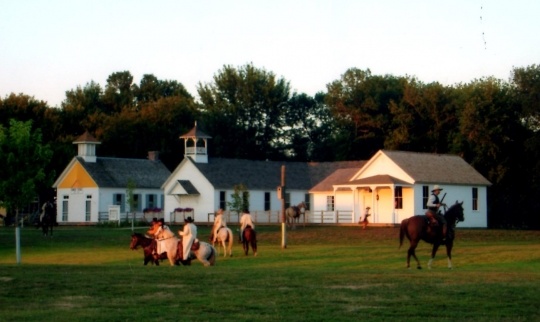
Murray County Sesquicentennial
Holding Location
Articles
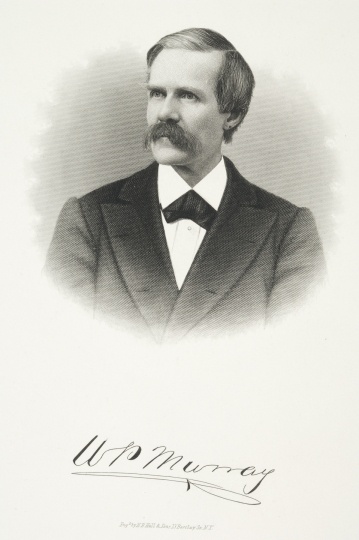
William Porter “Pitt” Murray
Public domain
Holding Location
Articles
More Information
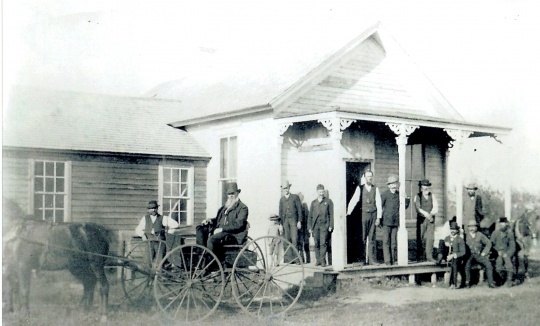
Murray County Courthouse
Public domain
Holding Location
Articles
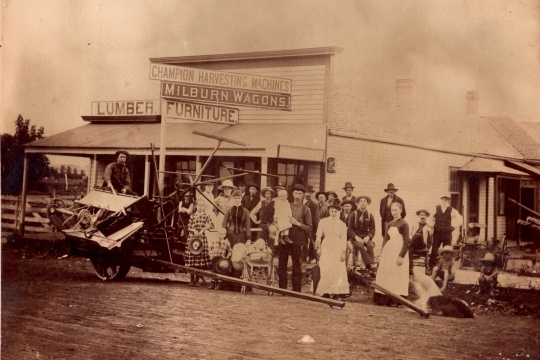
Avoca
Public domain
Holding Location
Articles
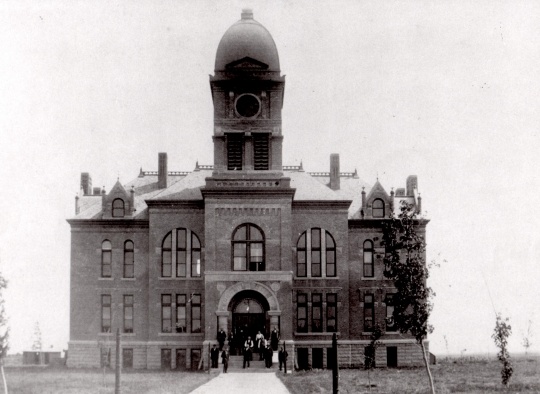
Slayton Courthouse
Public domain
Holding Location
Articles
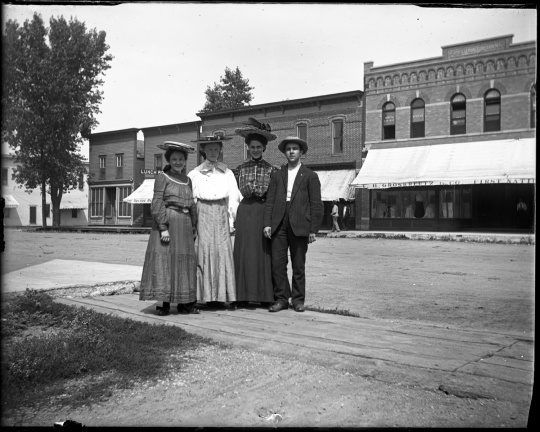
People on Main Street, Fulda
Public domain
Holding Location
Articles
More Information
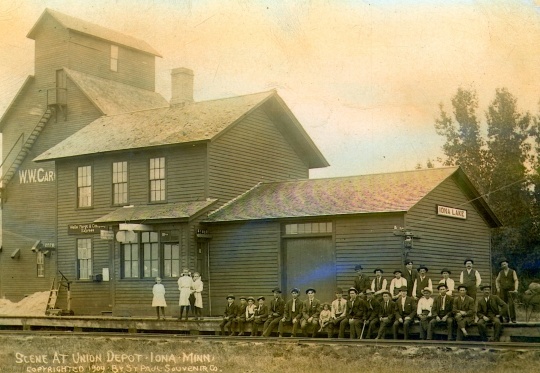
Railroad depot in Iona
Public domain
Holding Location
Articles
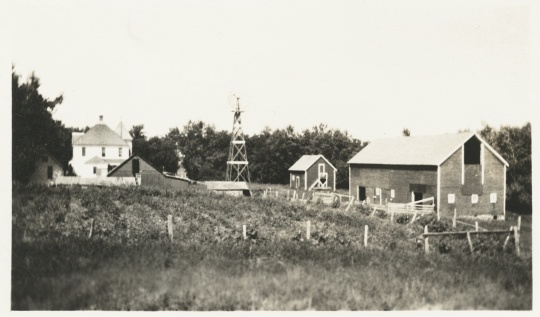
Jacob DeMong Farm, Murray County
Public domain
Holding Location
Articles
More Information
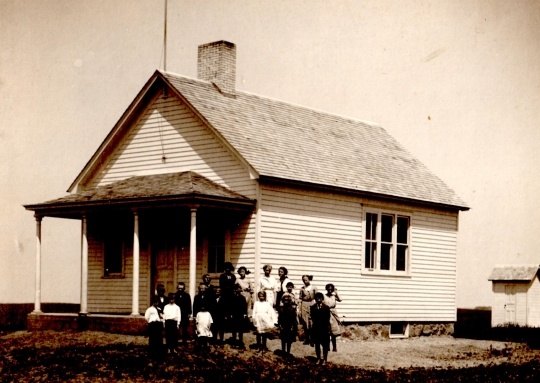
District 112 School
Public domain
Holding Location
Articles
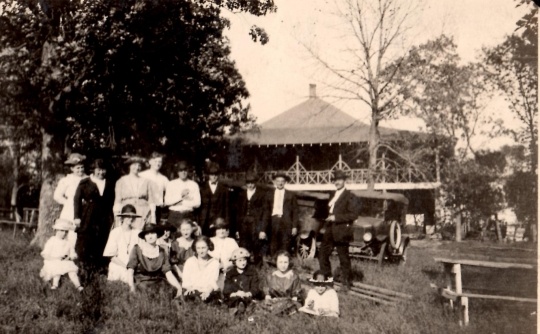
Valhalla Island Resort
Holding Location
Articles

Parade in Slayton
Holding Location
Articles
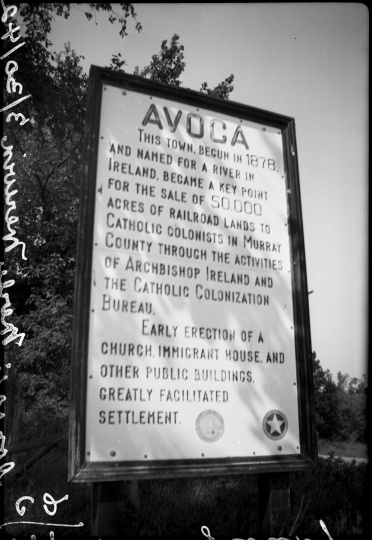
Avoca marker in Murray County
Holding Location
Articles
More Information
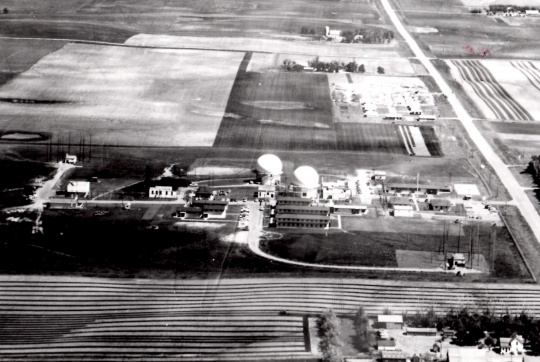
Chandler Air Base
Holding Location
Articles
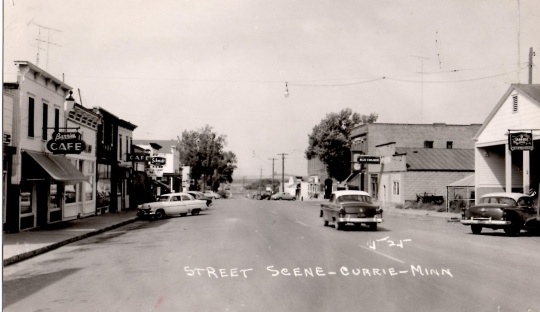
Main Street in Currie
Holding Location
Articles
More Information
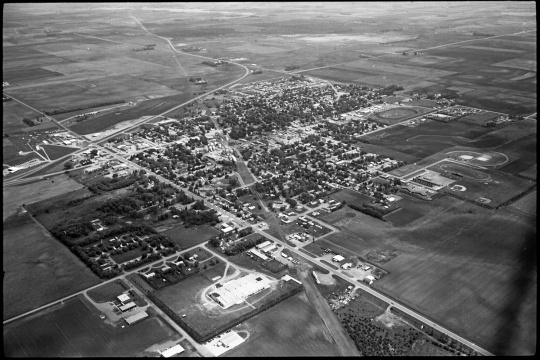
Aerial view of Slayton
Holding Location
Articles
More Information

Chandler-Lake Wilson High School
Holding Location
Articles

Wind turbines in Murray County
Holding Location
Articles
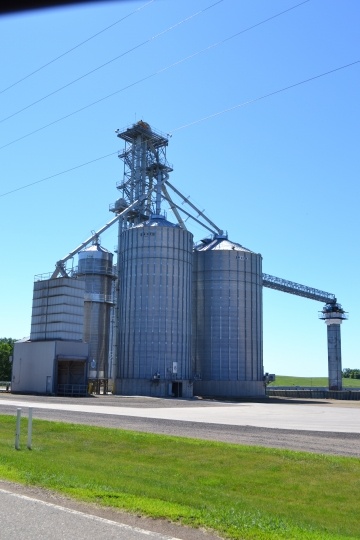
Grain elevator in Dovray
Holding Location
Articles

Lake Wilson
Holding Location
Articles
Related Articles
Turning Point
In 1857 the Minnesota Territorial Legislature establishes Murray County, named in honor of legislator William Porter “Pitt” Murray.
Chronology
1849
1851
1857
1858
1862
1879
1890
1940
1992
2007
2010
Bibliography
Amato, Anthony J., Janet Timmerman, and Joseph A. Amato, eds. Draining the Great Oasis: An Environmental History of Murray County, Minnesota. Marshall, MN: Crossings Press, 2001.
Anfinson, Scott. Prairie, Lakes & People: The Archaeology of Southwestern Minnesota. The Rural & Regional Essay Series. Marshall, MN: Society for the Study of Local & Regional History, 1999.
Book Committee of the Murray County Historical Society. Murray County, Minnesota, 1857–2007: A Scrapbook of Memories. Virginia Beach, VA: The Donning Company Publishers, 2007.
“Currie Yesterday & Today.” Special insert of the Tracy Headlight-Herald, July 2, 1997.
Dahlquist, Mrs. O. W. “Facts About the County You Should Know.” Slayton Murray County Herald, March 5, 1925.
EDF Renewable Energy. Chanarambie Wind.
http://www.edf-re.com/project/chanarambie-wind/
Hansen, David J. Murray County’s War: The Battle for the Murray County Seat. Broken Arrow, OK: Daylight Publishers, 2007.
“Lake Shetek Resorts and Camps.” [Binder.] Archives of the Murray County Historical Society, Slayton.
Description: Newspaper articles, photographs, brochures, and paper ephemera documenting the history of Lake Shetek.
Minnesota Historical Records Survey Project, Division of Community Service Programs, Works Project Administration. Inventory of the County Archives of Minnesota, No. 51, Murray County. St. Paul: Minnesota Historical Records Survey Project, 1941.
“Murray County.” Slayton Gazette, October 14, 1915.
Murray County Historical Society. A History of Murray County, Minnesota. Marceline, MO: Walsworth Publishing Company, Inc., 1982.
Murray County Historical Society. In Commemoration of the Sioux Uprising, August 20, 1862. Tracy, MN: Tracy Publishing Company, Inc., 2006 (reprint; originally published in 1962).
“Murray County School Districts Prior to Consolidation.” Manuscript in the Murray County Schools Miscellaneous File. Archives of the Murray County Historical Society, Slayton.
Rhude, Andreas Jordahl. “Slayton Fiberglass Boats.” Manuscript. Archives of the Murray County Historical Society, Slayton.
http://acbs-bslol.com/wp-content/uploads/2015/03/SlaytonBoats.pdf
Richter, Gary, ed. Village of Chandler: Our Town History 1986. [Chandler?], MN: N.p., 1986.
Schreiber, David. County Executive Director, USDA Farm Service Agency, Murray County FSA, Slayton. Personal correspondence with the author, July 27, 2017.
Stevens, Hiram F. “Honorable William P. Murray” in The Bench and Bar of St. Paul (1890). Minnesota Legal History Project.
http://www.minnesotalegalhistoryproject.org/assets/Stevens%20-%20%20%20St.%20Paul%20Bar%20(1890)-MM.pdf
TownCharts.com. Murray County, Minnesota Demographics Data.
http://www.towncharts.com/Minnesota/Demographics/Murray-County-MN-Demographics-data.html
Trail’s Best. Trails Best Story.
https://www.trailsbest.com/tb/pages/10/trailsbeststory
United States Census Bureau. State and County QuickFacts, Murray County, Minnesota.
https://www.census.gov/quickfacts/table/PST045216/00
United States Department of Agriculture. Census of Agriculture. 1940 Census Volume I, Part 2: Statistics for Counties.
http://usda.mannlib.cornell.edu/usda/AgCensusImages/1940/01/15/1940-01-15.pdf
United States Department of Agriculture. Census of Agriculture. 1974 Census Volume I, Part 23: State and County Date (Minnesota).
http://usda.mannlib.cornell.edu/usda/AgCensusImages/1974/01/23/1974-01-23.pdf
United States Department of Agriculture. Census of Agriculture. 2012 Census Volume 1, Chapter 2: County Level Data (Minnesota).
https://www.agcensus.usda.gov/Publications/2012/Full_Report/Volume_1,_Chapter_2_County_Level/Minnesota/
Wikipedia. Chandler Air Force Station.
https://en.wikipedia.org/wiki/Chandler_Air_Force_Station
Wikipedia. Murray County, Minnesota. Historical Population Chart. https://en.wikipedia.org/wiki/Murray_County,_Minnesota
Related Resources
Primary
Crowl, Margaret. “A Murray County Chronicle.” 1952. Typed manuscript.
Currie File, Archives of the Murray County Historical Museum, Slayton
Description: Newspaper articles, photographs, documents, and paper ephemera documenting the history of Currie.
P1227
David Maxwell Fyffe and Jessie Fyffe Reminiscences, 1856–1934
Manuscript Collection, Minnesota Historical Society, St. Paul
Description: Reminiscences of David Fyffe, the local manager of a Scotch land company in southwestern Minnesota, and his wife Jessie. Provides detailed information on pioneer life in Pipestone and Murray counties in the 1880s and 1890s.
Davies, Mabel Currie. It Was This Way. Maryville, TN: 1953.
Eastlick, Lavina. Thrilling Incidents of the Indian War of 1862: Being a Personal Narrative of the Outrages and Horrors Witnessed by Mrs. L. Eastlick, in Minnesota. Columbus, NE: N.p., 1962.
Jay York and Family papers, 1909–1993
Manuscript Collection, Minnesota Historical Society, St. Paul
Description: Biographical and genealogical materials, correspondence, minutes, reports, speeches, and photographs documenting the activities of farmer and rural electric cooperative leader Jay Andrew York of Lake Wilson.
Jenkins, Thomas J. Six Seasons on our Prairies and Six Weeks in our Rockies. Louisville, KY: C. A. Rogers, 1884.
Lowe, George David. Growing up in Slayton, 1933–1951: Youthful Years. Minneapolis: Mill City Press, 2015.
Sweetman, John. “The Sweetman Catholic Colony of Currie, Minnesota: A Memoir.” Acta et Dicta 3, no. 1 (1911): 41–65.
A/.M984
William Pitt Murray and family papers, 1836–1944
Manuscript Collection, Minnesota Historical Society, St. Paul
http://collections.mnhs.org/MNHistoryMagazine/articles/1/v01i03p109-125.pdf
Description: Correspondence, articles and addresses, assorted historical data, and other materials of Murray, a St. Paul lawyer, territorial and state legislator (various years), member of the St. Paul city council (1861–1879), and city attorney (1876–1889).
Secondary
Carley, Kenneth. The Dakota War of 1862: Minnesota’s Other Civil War. 2nd edition. St. Paul: Minnesota Historical Society Press, 1976.
“Celebrating 150 Years!” Supplement to the Fulda Free Press and Murray County News, July 25, 2007.
Forrest, Robert B. A History of Western Murray County from 1688 to December 1946, and of Leeds Township, a Typical Prairie Township. Lake Wilson, MN: N.p., [1947?].
Gaul, Anita Talsma. Homely Girls and Pretty Babies: A History of the Murray County Fair. Slayton, MN: Murray County Agricultural Society, 2013.
——— . “‘Living in Perfect Harmony’: A Multiethnic Catholic Parish on the Minnesota Prairie, 1881–1910.” Journal of American Ethnic History 30, no. 1 (Fall 2010): 37–71.
http://www.jstor.org/stable/10.5406/jamerethnhist.30.1.0037
KELOland. Town Adjusts to Life After Air Force.
http://www.keloland.com/news/article/other/town-adjusts-to-life-after-air-force
Luehmann, Maxine Kayser. The Sun and the Moon: A History of Murray County. Minnesota: Murray County Board of Commissioners, [1985?].
Murray County Herald and Fulda Free Press Centennial Edition, 1872–1972, August 17, 1972.
Richter, Gary, ed. Buffalo Ridge Tornado: June 16, 1992. MN: N.p., 1994.
Schultz, Duane. Over the Earth I Come: The Great Sioux Uprising of 1862. New York: St. Martin’s Press, 1992.
“Sesquicentennial, Celebrating 150 Years.” Supplement to the Fulda Free Press and Murray County News, August 1, 2007.
Shannon, James P. Catholic Colonization on the Western Frontier. New Haven: Yale University Press, 1957.
Smith, Alice E. “The Sweetman Irish Colony.” Minnesota History 9, no. 3 (December 1928): 331–346.
http://collections.mnhs.org/MNHistoryMagazine/articles/9/v09i04p331-346.pdf
Souvenir Edition, Murray County Centennial, 1872–1972, Fulda Free Press, 1972.
Timmerman, Janet. Red Earth, White Road. The Rural & Regional Essay Series. Marshall, MN: Society for the Study of Local & Regional History, 2012.
Web
City of Chandler.
http://www.cityofchandlermn.com/
City of Currie.
http://murray-countymn.com/my-product/currie/
City of Fulda.
http://fuldamn.com/
City of Hadley.
https://cityofhadley.com/
City of Lake Wilson.
http://cityoflakewilson.org/
City of Slayton.
http://www.slayton.govoffice.com/
End-O-Line Railroad Park & Museum.
http://endoline.com/
Lake Shetek State Park.
http://www.dnr.state.mn.us/state_parks/lake_shetek/index.html
Map of Murray County.
http://murraycountymn.com/wp-content/uploads/2015/07/MurrayCounty2010Front.pdf
Murray County.
http://murraycountymn.com/
Murray County Historical Society.
http://murraycountyhistoricalsociety.org/




















